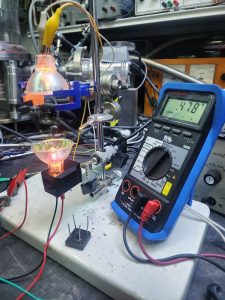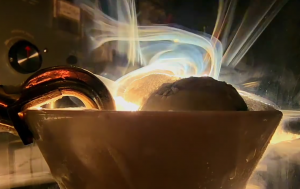As a science enthusiast with a penchant for experimentation, I recently embarked on an exciting journey: creating white plasma in a vacuum chamber. The process involved using dry ice to sublimate and produce CO2 gas, which I then passed through with high voltage to generate plasma. It was a thrilling adventure filled with challenges and fascinating discoveries.
The idea struck me during one of my late-night research sessions. I had read about the intriguing properties of plasma and was particularly fascinated by the prospect of creating white plasma. After some planning and gathering of materials, I was ready to transform my humble home lab into a high-voltage playground.
First, I needed a vacuum chamber. I repurposed my fusor reactor chamber, ensuring it was still airtight to maintain the necessary low-pressure environment. Next, I obtained a chunk of dry ice. Handling dry ice is always an adventure—its extreme coldness and tendency to sublimate made it both a crucial element and a tricky component to manage.
Once the vacuum chamber was set up, I placed the dry ice inside and sealed the chamber. Watching the dry ice sublimate was mesmerizing. As it turned from a solid to a gas, it filled the chamber with CO2, creating the perfect medium for my plasma experiment.
Now came the electrifying part—literally. I carefully connected high-voltage electrodes to the chamber, ensuring all safety precautions were in place. The anticipation was palpable as I flipped the switch and began to pass high voltage through the CO2 gas.
The moment the current flowed through the gas, I was greeted with a stunning display. The CO2 molecules, excited by the high voltage, ionized and created a beautiful white plasma. It was a surreal sight, watching the plasma dance and glow within the vacuum chamber. The white hue was particularly striking, a result of the specific interactions between the CO2 molecules and the high voltage.
The experiment was a success, but it didn’t come without its challenges. Maintaining the right pressure in the vacuum chamber and ensuring a consistent flow of CO2 gas required constant attention. There were moments of trial and error, adjusting voltage levels and troubleshooting equipment issues. But each obstacle only added to the thrill of the journey.
Creating white plasma was not just about the end result—it was about the entire process. It was a testament to the wonders of science and the joy of discovery. The experience reinforced my love for experimentation and the boundless possibilities that come with a curious mind and a bit of ingenuity.
Reflecting on this journey, I am filled with a sense of accomplishment and excitement for future experiments. There’s something incredibly rewarding about turning an idea into reality, especially when it involves creating something as extraordinary as plasma. If there’s one thing I’ve learned, it’s that the path of scientific exploration is paved with both challenges and awe-inspiring moments.
So, if you ever find yourself curious about the wonders of plasma or the thrill of high-voltage experiments, I highly recommend diving in. With a bit of dry ice, a vacuum chamber, and a lot of curiosity, you might just create your own spectacular light show—and learn a great deal along the way.





